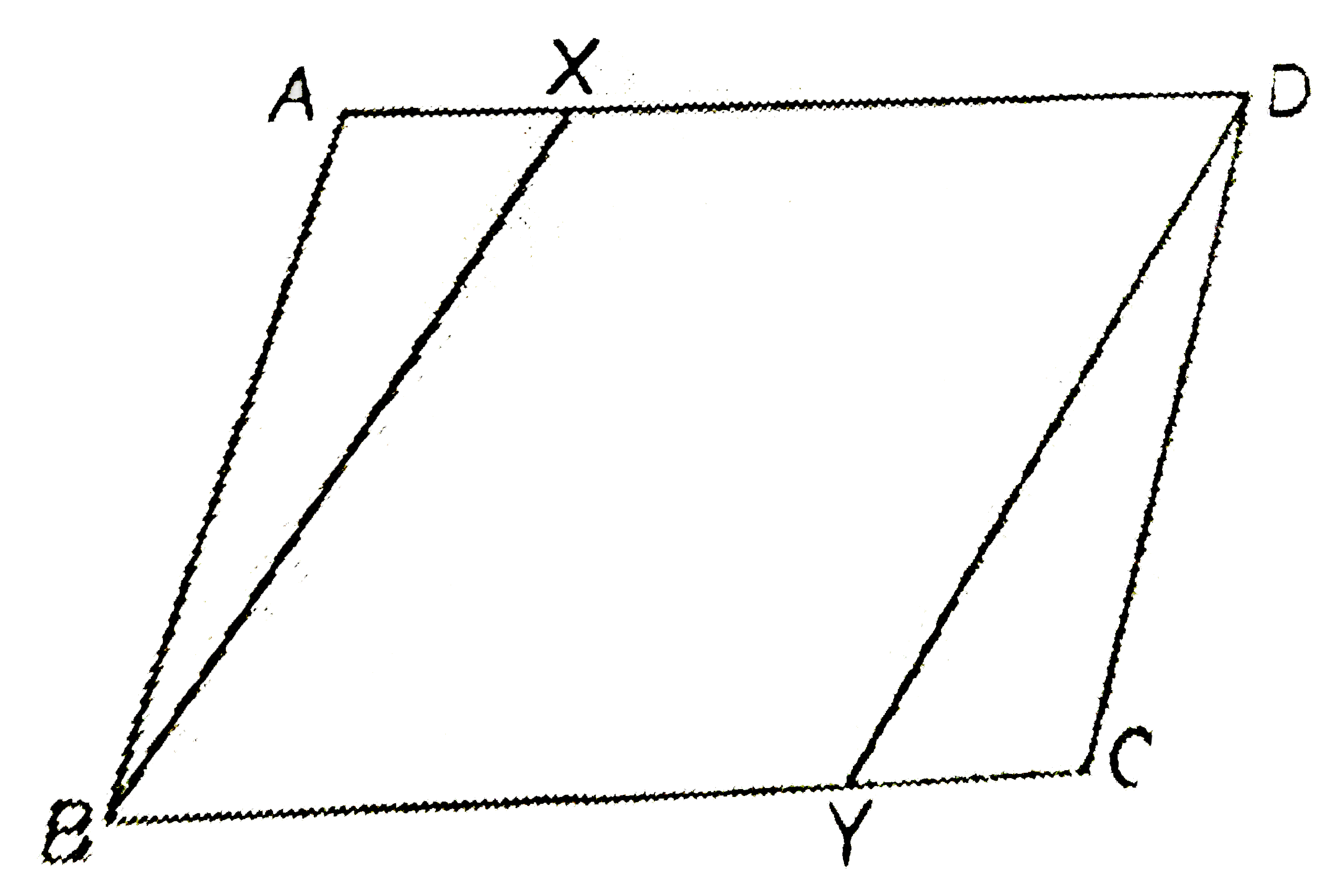Complete Solutions to Exercise 8a of chapter QUADRILATERALS of Class 9 book with complete answers and questions
| Class 9 | MATHS |
| Chapter | QUADRILATERALS |
| NAGEEN PRAKASHAN | Exercise 8a |
| Number Of Questions | 29 |
| Academic Year | 2023-24 |
The angles of a quadrilateral are `89^(@) and 113^(@)` If the other two angles are equal, find the equal angles.
02:09View SolutionIn eqadrilateral ABCD, `angleA=100^(@),angleB=70^(@)andangleC:angleD=8:11,"then fine"angleD.`
03:48View SolutionIn quadrilateral ABCD, side AB is parallel to side DC. If `angleA : angle D=1:2 and angleC: angleB=4:5`.
(i) Calculate each angle of the quadrilateral.
(ii) Assign a special name to quadrialateral ABCD.06:40View SolutionFind the values of x and y from adjoining parallelogram.
 04:18View Solution
04:18View SolutionFind x,y and z in each of the following figure:
 07:04View Solution
07:04View SolutionIn the given figure, find `(i) angleXOD(ii) angleXOC`
 06:49View Solution
06:49View SolutionIn the given figure, ABCD is a square and `anglePQR=90^(@).If PB=QC=DR,` prove that.
(i) QB = RC
(ii) PQ = QR
(iii) `angleQPR=45^(@)`
 05:34View Solution
05:34View SolutionIn a square ABCD, diagonals meet at O. P is point on BC such that OB = BP.Show that (i) `anglePOC=(22(1)/(2))^(@)`
(ii) `angleBDC=2anglePOC`
(iii) `angleBOP=3angleCOP`07:24View SolutionThe give figure shows a square ABCD and an equilayeral teiangle APB. Calculate :
`{:((1)angleAOB,(ii)angleBPC),((iii)anglePCD,(iv)"reflex"angleAPC):}`
 04:31View Solution
04:31View SolutionIn the given figure, ABCD is a rohombus with `A=67^(@).` If DEC is an equilateral triangle, calculate
(i) `angleCBE`
(ii) `angleDBE`
 05:45View Solution
05:45View SolutionIf the adjacent angles of a parallelogram are in the ratio `1/3:1/2.` Find all the angles of parallelogram.
03:34View SolutionProve that the sum of two consecutive angles of a parallelogram is `180^(@).`
04:29View SolutionOne angle of a parallelogram is `60^(@).` Find its remaining angles.
02:35View SolutionOne diagonal of a parallelogram biscets its one of the angles. Show tht it will also bisec the opposite angle.
02:45View SolutionThe opposite angles of a parallelogram are `(3x-2)^(@)and(150-x)^(@).` Find each angle of the parallelogram.
03:34View SolutionIn the adjoining figure, ABCD is a parallelogram. If `angleABC=125^(@),`
`angleACD=28^(@),"then fine"angleDAC.`
 03:26View Solution
03:26View SolutionIn a parallelogram, one angleis twice of its consecutiv angle. Find all the angles of the parallelogram.
03:37View SolutionIn a parallelogram ABCD, AX and CY are the bisectors of `angleAandangleC` respectively. Prove that `AX"||"CY.`
04:23View SolutionIn a parallelogram PQRS, PX and QY are the perpendiculars drawn from P and Q respectively so SR and SR produced. Prove that PX= QY.
02:54View SolutionIn a parallelogram ABCD, the bisector of `angleA` bisects the line B at point X. Prove that AD = 2AB.
03:11View SolutionIn a parallelogram ABCD, `angleBCD=60^(@)` If the bisectors AP and BP of `angleA and angleB` respectively, meet the side CD at point P, then prove that CP = PD.
06:47View SolutionIn the adjoining figure, `DeltaPQR` is formed by the sides PQ, QR and RP which are drawn parallel to sides AB,BC and CA respectively of `DeltaABC.` Prove that
`" "PQ+QR+RP=2(AB+BC+CA).`
 04:52View Solution
04:52View SolutionX and Y are the mid-points of the opposite sides AB and DC of a parallelogram ABCD. Prove that `squareAXCY` is a parallelogram.
02:53View SolutionTwo points X and Y lie on the diagonal BD of a parallelogram ABCD such that DX = BY. Prove that `squareAXCY` is a parallelogram.
04:08View SolutionIn the adjoining figure, `DeltaABC` is an isosceles triangle in which AB = AC. Side CP is parallel to AB and AP is the bisector of exterior angle CAD of `Delta` ABC. Prove that `anglePAC=angleBCAand squareABCP` is a parallelogram.
 04:18View Solution
04:18View SolutionAB and CD are two parallel lines and a transversal 'l' intersects these lines at X and Y respectively Prove that the bisectors of interior angles from a parallelogram whose each angle is `90^(@).`
04:50View SolutionIn the adjoining figure `squareABCD` is a parallelogeam. Points X and Y lie on the sides AD and BC respectively and `AX=1/4ADandCY=1/4BC.` Show that `squareXBYD` is a parallelogram.
 03:51View Solution
03:51View SolutionIn the adjoining figure, ABCDEF is a regular hexagon. Prove that `squareABDE, square ACDF and squareAGDH` are parallelograms.
 16:17View Solution
16:17View SolutionTwo triangles `DeltaABC and Delta DEF` are given such that `AB"||"DE,BC"||"EFandAB=DE,BC=EF.`"Show that"AC"||"DFandAC=DE`
03:35View Solution
Exercise 8a questions and complete solutions for chapter QUADRILATERALS of NAGEEN PRAKASHAN ENGLISH of Class 9
